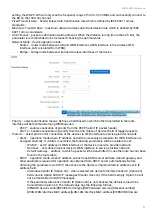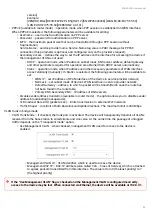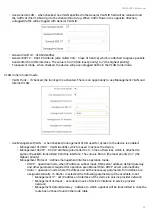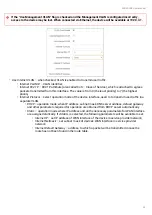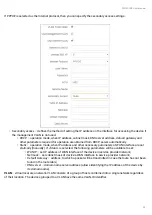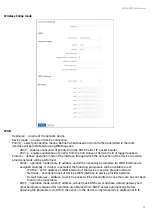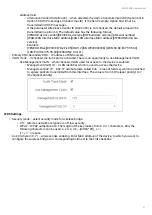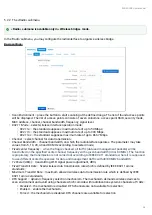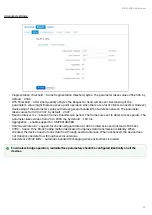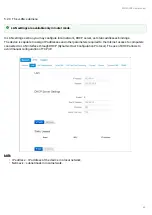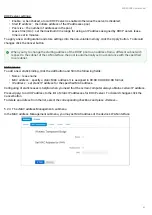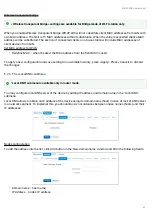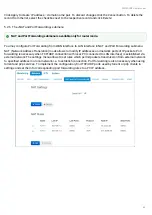
WB-2P-LR5. User manual
28
•
•
•
•
•
•
•
•
•
•
•
•
•
•
•
•
•
•
•
•
5.1.10 The «Routes» submenu
In the Routes submenu you may view the device route table.
Destination
– IP address of destination host or subnet that the route is established to;
Gateway
– IP address of the gateway, through which access to the addressee is implemented;
Netmask
– subnet mask;
Flags
– specific route attributes. The following
flag
values exist:
U
– means that the route is created and passable;
H
– identifies the route to the specific host;
G
– means that the route lies through the external gateway; System network interface provides routes
in the network with direct connection. All other routes lie through the external gateways. G flag is used
for all routes except for the routes in the direct connection networks.
R
– means that the route most likely was created by a dynamic routing protocol running on a local
system through the 'reinstate' parameter;
D
– means that the route was added on reception of the ICMP Redirect Message. When the system
learns the route from the ICMP Redirect message, the route will be added into the routing table in
order to exclude redirection of the following packets intended for the same destination.
M
– means that the route was modified – likely by a dynamic routing protocol running on a local
system with the 'mod' parameter applied;
A
– means buffered route with corresponding record in the ARP table;
С
– means that the route source is the core routing buffer;
L
– means that the route destination is an address of this PC. Such «local routes» exist in the routing
buffer only.
В
– means that the route destination is a broadcasting address. Such 'broadcast routes' exist in the
routing buffer only.
I
– means that the route is related to the loopback interface and not to address to a ring network.
Such 'internal routes' exist in the routing buffer only.
!
– means that datagrams sent to this address will be rejected by the system.
Metric
– defines route cost. Metrics allows you to sort the duplicate routes, if they are exist in the table.
Ref
– identified number of references to the route for connection establishment (not used by the system).
Use
– number of route detections performed by IP protocol.
Interface
– name of the network interface that the route lies through
.
To get current information, click the 'Refresh' button.


















